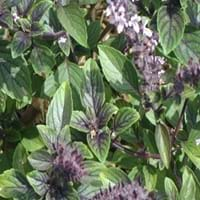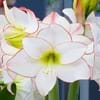Life Span
Perennial
Perennial
Type
Bulb or Corm or Tuber
Herbs
Origin
Hybrid origin
Hybrid origin
Types
Not Available
Not available
Habitat
tropical environments
gardens, Grassland, Hillside, meadows
USDA Hardiness Zone
8-11
9-11
AHS Heat Zone
Not Available
12-1
Sunset Zone
21,22
A1, A2, A3, H1, H2, 1a, 1b, 2a, 2b, 3a, 3b, 4, 5, 6, 7, 8, 9, 10, 11, 12, 13, 14, 15, 16, 17, 18, 19, 20, 21, 22, 23, 24
Habit
Clump-Forming
Oval or Rounded
Flower Color
White, Red, Light Pink
Pink, Lavender
Flower Color Modifier
Bicolor
Bicolor
Fruit Color
Green, Brown
Not Available
Leaf Color in Spring
Green, Dark Green
Purple
Leaf Color in Summer
Light Green
Green, Purple
Leaf Color in Fall
Several shades of Green
Green, Purple
Leaf Color in Winter
Light Green
Light Green
Leaf Shape
Long Linear
Ovate
Plant Season
Spring, Summer, Winter
Spring, Summer, Fall, Winter
Sunlight
Full Sun, Partial Sun
Full Sun, Partial Sun
Type of Soil
Loam, Sand
Loam, Sand
The pH of Soil
Acidic, Neutral
Neutral
Soil Drainage
Well drained
Well drained
Bloom Time
Not Available
Indeterminate
Tolerances
Deer resistant
Drought
Where to Plant?
Container, Ground, Pot
Ground
How to Plant?
Divison, From Rhizomes, Tubers
Stem Planting
Plant Maintenance
Low
Medium
Watering Requirements
Average Water Needs
Requires regular watering
In Summer
Lots of watering
Lots of watering
In Spring
Moderate
Moderate
In Winter
Average Water
Average Water
Soil pH
Acidic, Neutral
Neutral
Soil Type
Loam, Sand
Loam, Sand
Soil Drainage Capacity
Well drained
Well drained
Sun Exposure
Full Sun, Partial Sun
Full Sun, Partial Sun
Pruning
Cut or pinch the stems, Remove damaged leaves, Remove dead branches, Remove dead leaves
Cut or pinch the stems, Do not prune during shooting season, Prune regularly, Prune to stimulate growth, Remove dead leaves, Remove dead or diseased plant parts, Remove deadheads
Fertilizers
as it is a flowering plant, use high phosphorous content fertilizer, Nitrogen, Phosphorous, Potassium, Requires high amount of nitrogen
All-Purpose Liquid Fertilizer
Pests and Diseases
Aphids, Grasshoppers, Mealybugs, Mites, Red blotch, Slugs, Snails
Red blotch
Plant Tolerance
Deer resistant
Drought
Flower Petal Number
Not Available
Single
Edible Fruit
Not Available
No
Fragrant Flower
Not Available
Yes
Fragrant Bark/Stem
No
Yes
Foliage Texture
Medium
Coarse
Foliage Sheen
Glossy
Glossy
Attracts
Bees, Butterflies, Hummingbirds
Bees
Allergy
poisonous if ingested
no allergic reactions
Aesthetic Uses
Beautification, Bouquets, Cottage Garden, Showy Purposes
Not Used For Aesthetic Purpose
Beauty Benefits
Not Available
Not Available
Environmental Uses
Not Available
Air purification
Medicinal Uses
Not Available
constipation, Diarrhea, Headache, Kidney problems, Stomach pain
Part of Plant Used
Flowers
Whole plant
Other Uses
Used as Ornamental plant, Used for bedding in gardens
Used As Food, Used as Ornamental plant, Used for fragrance
Used As Indoor Plant
Yes
No
Used As Outdoor Plant
Yes
Yes
Garden Design
Container, Cutflower, Houseplant, Mixed Border, Tropical
Container, Edible, Herb / Vegetable, Mixed Border
Botanical Name
HIPPEASTRUM 'Picotee'
OCIMUM 'African Blue'
Common Name
Florist Amaryllis, Hippeastrum, Picotee Hippeastrum
African Blue Basil, Hybrid Basil
In Hindi
HIPPEASTRUM
अफ्रीकी ब्लू तुलसी
In German
HIPPEASTRUM
African Blue Basilikum
In French
HIPPEASTRUM
Bleu basilic africaine
In Spanish
Hippeastrum
Albahaca azul africana
In Greek
Hippeastrum
Αφρικής Μπλε βασιλικό
In Portuguese
HIPPEASTRUM
Africano manjericão azul
In Polish
Hippeastrum
Afrykański Niebieski bazylią
In Latin
Hippeastrum
अफ्रीकी ब्लू तुलसी
Phylum
Magnoliophyta
Not Available
Class
Magnoliopsida
Magnoliopsida
Order
Asparagales
Lamiales
Family
Amaryllidaceae
Lamiaceae
Clade
Angiosperms, Monocots
Basal Tricolpates
Tribe
Not Available
Not Available
Subfamily
Amaryllidoideae
Not Available
Number of Species
Not Available
Difference Between Hippeastrum and African Blue Basil
If you are confused whether Hippeastrum or African Blue Basil are same, here are some features about those plants to help you choose better. Many people think that these two plants have the same characteristics, but one can see Hippeastrum and African Blue Basil Information and learn more about it. Fertilizers required for proper growth of Hippeastrum are as it is a flowering plant, use high phosphorous content fertilizer, Nitrogen, Phosphorous, Potassium and Requires high amount of nitrogen, whereas for African Blue Basil fertilizers required are All-Purpose Liquid Fertilizer. Hence, one should know the basic difference between Hippeastrum and African Blue Basil if you are planning to have them in your garden to enhance its beauty.
<
Flowering PlantsImportance of Hippeastrum and African Blue Basil
Want to have the most appropriate plant for your garden? You might want to know the importance of Hippeastrum and African Blue Basil. Basically, these two plants vary in many aspects. Compare Hippeastrum and African Blue Basil as they differ in many characteristics such as their life, care, benefits, facts, etc. Every gardener must at least have the slightest clue about the plants he wants to plant in his garden. Compare their benefits, which differ in many ways like facts and uses. The medicinal use of Hippeastrum is Not Available whereas of African Blue Basil is constipation, Diarrhea, Headache, Kidney problems and Stomach pain. Hippeastrum has beauty benefits as follows: Not Available while African Blue Basil has beauty benefits as follows: Not Available.
Compare Facts of Hippeastrum vs African Blue Basil
How to choose the best garden plant for your garden depending upon its facts? Here garden plant comparison will help you to solve this query. Compare the facts of Hippeastrum vs African Blue Basil and know which one to choose. As garden plants have benefits and other uses, allergy is also a major drawback of plants for some people. Allergic reactions of Hippeastrum are poisonous if ingested whereas of African Blue Basil have no allergic reactions respectively. Having a fruit bearing plant in your garden can be a plus point of your garden. Hippeastrum has no showy fruits and African Blue Basil has no showy fruits. Also Hippeastrum is not flowering and African Blue Basil is not flowering . You can compare Hippeastrum and African Blue Basil facts and facts of other plants too.





